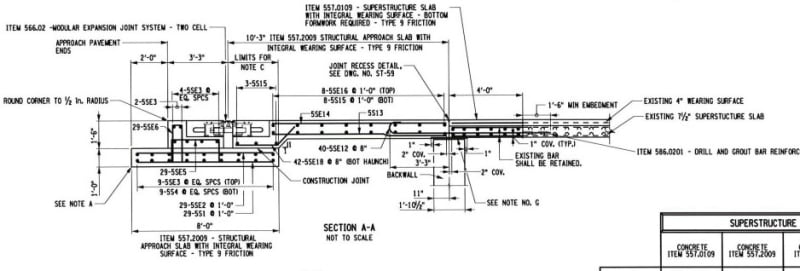BridgeSmith
Structural
We have a 980' long highway bridge to design in a high seismic region. We will be using seismic isolation bearings, so in addition to the regular longitudinal movements due to thermal expansion (nearly 7" total), the expansion joint will need to accommodate several inches of transverse displacement during an earthquake.
The joint does not have to survive undamaged, but the bridge will need to be passable by emergency vehicles immediately after an earthquake.
There are specialized modular (multiple strip seal) type joints available, they are very large (depth-wise) and very expensive, so we'd like to keep it simpler and more economical if we could.
Any suggestions?
Rod Smith, P.E., The artist formerly known as HotRod10
The joint does not have to survive undamaged, but the bridge will need to be passable by emergency vehicles immediately after an earthquake.
There are specialized modular (multiple strip seal) type joints available, they are very large (depth-wise) and very expensive, so we'd like to keep it simpler and more economical if we could.
Any suggestions?
Rod Smith, P.E., The artist formerly known as HotRod10

